An unexpected diagnosis:
 Two years after their wedding, Greg and Katie Duncan felt ready to start a family. However, after trying for about six months, Katie still wasn’t pregnant. After trying Clomid to help stimulate her ovaries, attention finally turned to Greg. Katie’s OB-GYN ordered a sperm test for Greg, and the results left the couple stunned. The first test showed Greg had zero viable sperm in the given sample. Greg recalled thinking, “There’s no way we got two zero counts in a row: there has to be a problem.” A repeat test indicated the same results. Greg seemed to have azoospermia.
Two years after their wedding, Greg and Katie Duncan felt ready to start a family. However, after trying for about six months, Katie still wasn’t pregnant. After trying Clomid to help stimulate her ovaries, attention finally turned to Greg. Katie’s OB-GYN ordered a sperm test for Greg, and the results left the couple stunned. The first test showed Greg had zero viable sperm in the given sample. Greg recalled thinking, “There’s no way we got two zero counts in a row: there has to be a problem.” A repeat test indicated the same results. Greg seemed to have azoospermia.
The couple visited a urologist, who didn’t perform any further testing before declaring Greg had an unexplained testicular failure. He refused to pursue genetic testing for Greg, claiming it was too expensive, and their insurance wouldn’t cover it. They were sent on their way without any answers. Greg felt upset, and was ready to go forward without receiving a second opinion, but Katie convinced him there was someone out there who had an answer.
Fortunately, they had connected with fertility specialist Dr. Donna Session in Franklin, Tennessee. Dr. Sessions didn’t accept their previous fertility doctor’s assessment that their fertility issues were caused by Katie being “too thin,” or that insurance wouldn’t cover genetic testing. She was determined to get to the bottom of the mystery.
Dr. Session ordered a genetic test, and assured the couple she’d get it covered by insurance. When the news came back that Greg had Klinefelter syndrome, as well as a secondary diagnosis of Robinsonian translocation 14-21, he felt a sense of relief. Now he knew why he had such a low sperm count, and what they needed to do to move forward. Dr. Session let the couple know all of the options available to them, including micro TESE, and IVF. However, the cost of the micro TESE surgery without a guarantee of finding viable sperm didn’t seem worth it to them. Adoption felt too risky, as Greg had known someone who had experienced a failed adoption.
Processing the diagnosis:
 While the couple was determining what their next steps to having a family would be, they were working through the news of Greg’s diagnosis. Having been together since Katie was sixteen, they’d long cherished the idea of having children together. They imagined having a curly-haired brunette child, and the realization that Greg couldn’t give that to her was devastating.
While the couple was determining what their next steps to having a family would be, they were working through the news of Greg’s diagnosis. Having been together since Katie was sixteen, they’d long cherished the idea of having children together. They imagined having a curly-haired brunette child, and the realization that Greg couldn’t give that to her was devastating.
Seeing photos of himself as a child added to the pain, because Greg realized he wouldn’t see himself replicated in children. Greg felt as though he’d failed, thinking “I’m a man and I can’t do the one thing men are supposed to be able to do, and that procreates, and I can’t do that.” He “cried his eyes out” for a couple of days, but felt determined to get the family they wanted.
Throughout the diagnosis, Greg’s family steadfastly supported the couple. The family came together to embrace Greg and Katie. Greg talked about his diagnosis, their fears, and goals openly with his family. Within days of receiving the diagnosis, he had posted it on Facebook to share with friends and family. Being open helped him come to terms with the diagnosis. Even though their path to a family had changed, their goal remained the same.
Greg quickly began to come to terms with the reality of the situation. He knew it was “still possible to have a child naturally; it might just come from a different source.” He and Katie communicated openly, sharing their thoughts and feelings about the situation while they adapted to this drastic change of plans. He thought “This is the goal: we want to have a family, we have to figure out a way to do it differently now.”
Donor sperm:
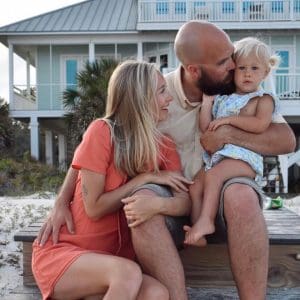 It was important to Greg that Katie have the experience of being pregnant, and he wanted to support her through pregnancy. He was looking forward to attending appointments with her, seeing his child on an ultrasound, and being there for the delivery. As they worked through their options, the idea of using donor sperm came up.
It was important to Greg that Katie have the experience of being pregnant, and he wanted to support her through pregnancy. He was looking forward to attending appointments with her, seeing his child on an ultrasound, and being there for the delivery. As they worked through their options, the idea of using donor sperm came up.
At first, Katie felt reserved about going down that route. Though she wasn’t sure how she felt about it, they started looking at donor sperm websites in August 2018. They also started working through the prerequisites required to make them eligible for using donor sperm to conceive a child. Part of this required them to meet with a fertility counselor to discuss their feelings about the process, and how they planned to let their child know how they were conceived.
As they moved forward, they continued to work through their emotions surrounding the IUI process. Even though it was strange to look at pictures of other men as children, and realize one of those men would father his child, Greg said, “I know what I can and can’t do, I’m not going to let my pride get in the way of us having a family.”
Finding a donor:
 Katie began combing the sperm donor website for a donor who matched their criteria. She was seeking someone who was blue-eyed, with curly hair, and of Scottish descent. However, they weren’t able to find someone who matched those specifications, and began branching out. Instead, they decided to start by looking for someone who was healthy, with no genetic issues. They were able to see a donor’s medical history back to their great-grandparents, which gave them an idea of what their future child might have for health concerns.
Katie began combing the sperm donor website for a donor who matched their criteria. She was seeking someone who was blue-eyed, with curly hair, and of Scottish descent. However, they weren’t able to find someone who matched those specifications, and began branching out. Instead, they decided to start by looking for someone who was healthy, with no genetic issues. They were able to see a donor’s medical history back to their great-grandparents, which gave them an idea of what their future child might have for health concerns.
Eventually, they were able to narrow their selections down to three or four donors. As the website showed the donors when they were infants, as well as around age five, the couple opted to choose the kids they found to be the cutest. They opted to not view photos of the donor as an adult, feeling that might be “too weird”. They wanted to focus on the idea of a baby, rather than an adult. After they narrowed it down to two donors, both of whom were blond, they listened to interviews with the men and made a selection. They chose the donor who seemed genuine, and kind.
At the time, they didn’t realize there were several factors that needed to line up in order for a donor to be a good match. This includes testing the mother and the donor’s CMV. A positive diagnosis in either biological parent can lead to potential health issues for a fetus, so it’s best avoided. Additionally, the donor and the mother must have the same blood type, which Katie and the donor did. IUI candidates also must have a blood panel done to check for health concerns, including STI tests, thyroid health, and rubella. They bought three vials of semen for about $3,000, which includes shipping and found a place nearby to store it.
IUI:
Getting ready for Katie’s first IUI (Intrauterine insemination) was an exciting, but busy time. Just four months From the time of Greg’s diagnosis to her first IUI treatment had elapsed, but the couple didn’t want to waste any more time pursuing their goal of having a family. In the midst of this, Greg was also attending endocrinology appointments, and starting testosterone replacement therapy.
Even though they’d committed to IUI, there was still a lot of work to be done. Katie had to track her cycle, with treatments beginning the first day of her menstrual cycle. She had to go in for ultrasounds to check the thickness of her uterine lining on cycle day three, then start an oral medication on cycle day five. She took the medication for five days, then on day ten had another ultrasound to check her follicle development. If there seemed to be a mature follicle, she would administer a trigger shot that night, or the next day. The shot helped the mature follicles get down into position. The IUI treatment would take place the day after the trigger shot. Using a catheter, Dr. Session would insert the sperm into her uterus.
Overall, Greg liked the IUI process. They felt supported by Dr. Session, whom they said would not go forward with any treatment unless everything was exactly how she liked it. IUI day was busy for the couple. They had to commute to Nashville, where the semen vials were stored. They waited for the vial to be thawed, and the semen washed so they would receive just the sperm. The first time they went to the storage facility, Greg was told to keep the sperm warm, and so rode back to Franklin with the vial tucked securely under his arm. For future samples, they were advised to keep it room temperature, and administer it within a couple of hours of thawing.
A successful IUI treatment:
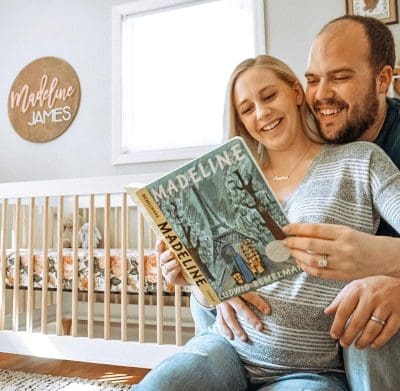 After the first IUI treatment, they waited a nerve-wracking two weeks before taking a pregnancy test. The result was negative, and they learned the treatment didn’t work on Katie’s birthday. Although devastated, they resolved to keep pushing forward. They tried again with Katie’s next cycle, and it worked. Katie was pregnant.
After the first IUI treatment, they waited a nerve-wracking two weeks before taking a pregnancy test. The result was negative, and they learned the treatment didn’t work on Katie’s birthday. Although devastated, they resolved to keep pushing forward. They tried again with Katie’s next cycle, and it worked. Katie was pregnant.
On the day they found out, Katie woke up early and took a pregnancy test. She had believed the treatment didn’t work, and was shocked to see a positive result on the test. Greg woke from a dead sleep to Katie telling him to “come to look at this; I don’t think it’s right!” Katie took three more tests, all of which yielded positive results.
Greg came awake “pretty quickly,” feeling happy and excited at the news. He knew there was “no turning back now,” and was happy for Katie, as she was the one who had endured the medical treatments to make their dream a reality. Even though ultrasound and bloodwork at Dr. Session’s office confirmed the joyful news, they were cautiously optimistic. They planned to wait until the 12 weeks mark, when the risk of a first-trimester miscarriage is reduced.
However, most people in their lives knew they were doing IUI, and therefore knew when they had conceived. Even though they tried to hide the news, both their families knew when their IUI appointments were, and wanted to know if it had been successful. The couple told everyone it has worked, but expressed a desire to “pump the breaks” a bit until they reached the three-month mark. Even though they were trying not to get too attached, Katie still felt excitement at the idea of a tiny human growing inside of her.
Pregnancy:
 For their pregnancy, they switched to a new OB-GYN, Dr. Wear. She was excited for the couple, letting them know that everything in the pregnancy was “perfect” and “textbook.” She was also intrigued by Greg’s diagnosis, as she had never met someone with Klinefelter syndrome in her practice. She asked a lot of questions, and wanted to know everything about 47, XXY.
For their pregnancy, they switched to a new OB-GYN, Dr. Wear. She was excited for the couple, letting them know that everything in the pregnancy was “perfect” and “textbook.” She was also intrigued by Greg’s diagnosis, as she had never met someone with Klinefelter syndrome in her practice. She asked a lot of questions, and wanted to know everything about 47, XXY.
Greg found the pregnancy “exciting and fun.” He was thrilled to go with Katie to prenatal appointments, to carry her bags for her, and sit in the waiting room with other expectant parents. He described the ultrasounds as “amazing,” and said it was “a miracle” to see their baby for the first time. Later on, they did a 3D ultrasound, and were able to see more details of their baby, including watching her suck her thumb.
Although they were offered a NIPT early in the pregnancy, they opted out. They didn’t really care if something was wrong, as they would raise and love their baby no matter what. At the routine anatomy scan around 20 weeks, they found out they were expecting a baby girl. Katie’s pregnancy went smoothly, and she experienced no issues throughout.
Delivery:
 A week before Katie was scheduled for an induction, her water broke. Greg was 45 minutes away at work when he got the call that she was in labor. He quickly let an employee know he’d be leaving, and drove the hour to the hospital. In the meantime, Katie called his parents to help her get to the hospital. Greg arrived at the hospital early to check her in, but was so excited and flustered he forgot her birthday.
A week before Katie was scheduled for an induction, her water broke. Greg was 45 minutes away at work when he got the call that she was in labor. He quickly let an employee know he’d be leaving, and drove the hour to the hospital. In the meantime, Katie called his parents to help her get to the hospital. Greg arrived at the hospital early to check her in, but was so excited and flustered he forgot her birthday.
When Katie arrived at the hospital at 6 p.m., she was ready to deliver their baby. She requested an epidural, and labor was soon underway. Madeline Duncan was born the next morning at 8:04 a.m. Greg cut the umbilical cord, and after the baby was cleaned up, he held his daughter for the first time. They did skin-to-skin, where the father removes their shirt and holds the newborn against their chest. Greg recalled the moment with tears in his eyes, saying it “was pretty intense; it was awesome.”
The moment she was born was “pure joy” for Greg and Katie. While the nurses assessed Madeline, Katie and Greg shared a moment of overwhelming love for one another, and a bit of disbelief that they were actually parents. Of those moments after their daughter was born, Greg said, “the love we have for each other is so strong, and the love we had for the baby inside of her, was so strong. Now, there’s somebody out here. It’s a crazy feeling. Then holding her for the first time, realizing oh this is real, this is real life.” Even though he’d been told he couldn’t father biological children, his daughter was here. He felt happy, and proud to be her father.
Raising Madeline:
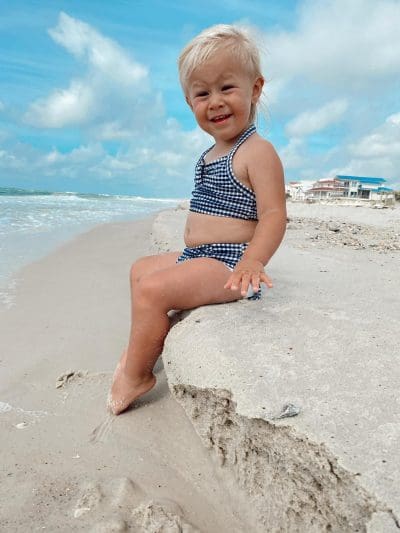
 As they began raising their daughter, there was no doubt for the couple that she was Greg’s daughter. Even though she doesn’t share genetics with Greg, when they go out together people frequently remark on how much she looks like him. They tell Greg “she looks just like you,” or “she has your eyes,” which makes his day. Noting that there are many men who are more sperm donors than actual fathers to their children, Greg said “just because the sperm didn’t come from me doesn’t mean I’m not her father.”
As they began raising their daughter, there was no doubt for the couple that she was Greg’s daughter. Even though she doesn’t share genetics with Greg, when they go out together people frequently remark on how much she looks like him. They tell Greg “she looks just like you,” or “she has your eyes,” which makes his day. Noting that there are many men who are more sperm donors than actual fathers to their children, Greg said “just because the sperm didn’t come from me doesn’t mean I’m not her father.”
Madeline turned two in July 2021, and “life has been crazy” for the family of three. Although they experienced the growing pains of the first six weeks of her life while they adjusted to being parents of a newborn, things are going more smoothly now. Katie stays home with Madeline, and they are continuously blown away by how precocious she is. The “past two years have flown by”, and now they have a sassy toddler who can count to ten. Madeline is aware that she was conceived by donor sperm, as its something the family works into their daily life. They share books about children conceived with donor sperm with Madeline, and are open about how she came to be part of their family.
Expanding their family:
The couple has continued with IUI treatments to expand their family. They are currently on their sixth treatment, and fourth consecutive IUI treatment. As none of these treatments have been successful, they are deciding if they will choose to go forward with more treatments. As of this writing, they have spent approximately $25,000 on IUI treatments. As they are a single-income family, they plan to discuss if going forward with more treatments is financially feasible for their family. However, they feel comforted in the knowledge that they have Madeline, and if they can’t have more, “she is enough.”
Words of encouragement:
When asked what he would say to others considering going down the donor sperm route, Greg said “It’s worth it. Every step we took and every dollar that went into it was one hundred percent worth it. Having that final product be a child is worth it. Don’t let your pride get in the way of achieving a goal or doing something you want for your family.” He went on to add, “It’s terrible to hear you can’t father children. It’s devastating news; words can’t describe how awful it is. It’s just an obstacle; you’re not dying. You still have a chance to keep living and have a great life. You just have to get over the fact that it’s an obstacle in your path to get what you want.”
Greg attributed some of his success in moving past his diagnosis as having “kept that same mindset for so long. I had a goal, and a path to get there…I came to a block in the road. I had to find a way around it. I pushed my pride aside and focused on what I wanted and how to get there. I think for anybody that gets diagnosed, especially while it’s in your path of having a child, it’s rough. I would just say remember what put you on that path in the first place, and that was to create a family. There are ways to create a family other than just normal conception…you can foster, adopt, foster to adopt, donor sperm, IVF; don’t let it stop you.”
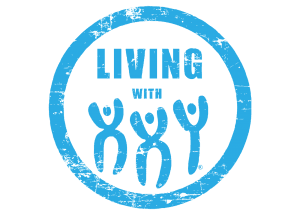


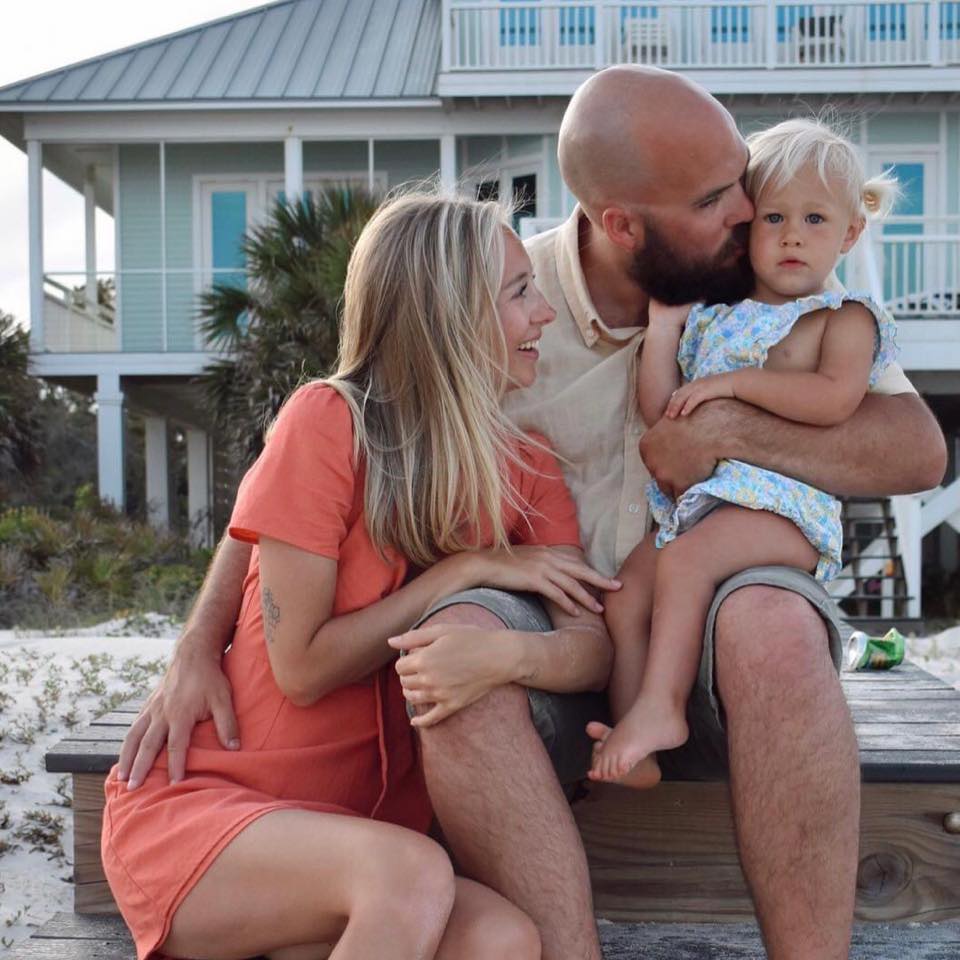
I am so very proud of Katie and Greg! Madeline is a joy!! We love this family with every fiber of our beings!!💗
Thank you for sharing your story. My son has 47xxy and is 27. This has opened the door to provide future discussions for him when he becomes ready for a family.
Your family is beautiful, congratulations
Beautiful story. Congratulations on your beautiful daughter and family of three❤️
so well written i love this story!
So happy to read that Greg and Katie have a beautiful daughter! My son, who was diagnosed at 25 – now 35, is a father to a beautiful
little baby girl, Evie, six months old! He and his wife are besotted – and I have a gorgeous grandchild to love and cherish!
A beautiful and encouraging story. My husband and I are also considering to start the process. He is also XXY and we want to start a family so bad. It’s made me feel so reassured hearing your story💗
Hi Greg & Katie, thank you for sharing your beautiful story. I was diagnosed with XXY just this month and I’m 32. Reading about your experience, Greg, was especially motivating. I really appreciate your vulnerability and I have no doubt that you both are rockstar parents. Also, thank you for your words of encouragement section. There are some great mantras in there.